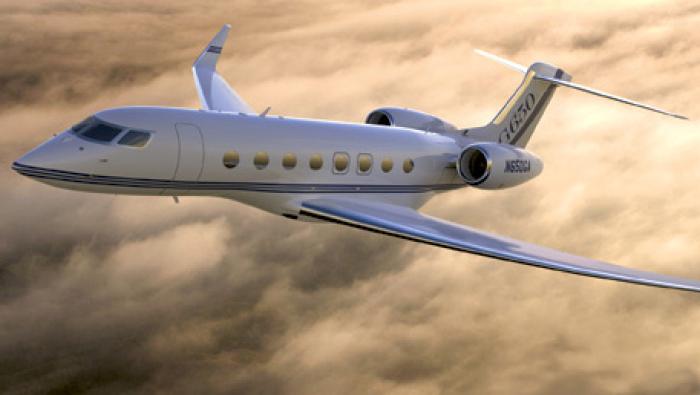Two years ago Embraer had one product for the business aviation market, with the Legacy, an executive/VIP or corporate shuttle version of its ERJ 135 regional jet. But that is ancient history, said Embraer executive v-p of executive jets Luis Carlos Affonso.
In May last year the Brazilian airplane manufacturer announced the formation of its executive jets division headed by Affonso, and revealed a $235 million investment program to produce a very light jet (VLJ) and a light jet. By last fall it had announced the formal launch of the Phenom 100 VLJ and Phenom 300 light jet. And this past May, at the European Business Aviation Convention & Exhibition in Geneva, Embraer unveiled the Lineage 1000, a $40.96 million (typically equipped), 19-passenger derivative of its E190 airliner, designed to fill a niche between the Boeing Business Jet and the Gulfstream G550.
In an interview with AIN last month, Affonso noted that the Phenoms and the Lineage 1000 are just the beginning. “Over the years, as part of our strategy for growth and diversification,” he said, “we plan to introduce new aircraft to complete the Embraer executive jets line.”
This strategy, he added, is complemented by “a business plan devoted to customer support and service.” The company expects to expand its existing three factory service centers at Gavião Peixoto near São José dos Campos in Brazil, OGMA near Lisbon, Portugal and Nashville, Tenn. Embraer also expects to add to its list of 17 factory-approved service centers “in the near future.” The factory service and maintenance center at Alverca, Portugal, opened in July at a renovated 16,600-
sq-ft OGMA hangar. It includes backshops and customer reception rooms and will accommodate as many as two Legacy 600s, one Lineage 1000 or up to eight Phenoms.
This summer, as if Embraer needed to provide more proof of its intent to become a major player in the business aviation market, the company revealed an executive jets backlog totaling $1.25 billion. That book includes a firm order from Gold Aviation Services in Fort Lauderdale for five Phenom 100s and options for an additional 10 Phenom 100s or Phenom 300s. They are to be managed, maintained and chartered by Golf Aviation. Also on order from the Kipco Group United Aviation are one Phenom 100, one Phenom 300 and one Legacy 600. The holding company, with assets throughout the Middle East and North Africa, expects to take delivery of the Legacy 600 in October and the Phenom 100 and Phenom 300 in 2008 and 2010, respectively.
Embraer cut metal for the Phenom 100 in June this year and deliveries are expected to begin in mid-2008. Deliveries of the Phenom 300 are expected to begin in late 2009.
Affonso disagrees with those who do not see a ready market in Latin America for the Phenom 100 and other VLJs. He maintains that there is an aging fleet of light jets that current operators will need to replace in the near term and that there are thousands of owner-operators of turboprop aircraft and heavy piston twins.
“We have also had inquiries from various charter companies. We expect to deliver a product that will create a customer loyalty that will keep them in the Embraer fold as they move up,” he said.
While the Lineage is designed for that niche market between large business jets such as the Global Express and still larger ACJ and BBJ, Affonso said he expects it will appeal to current owners and operators of aircraft
in those categories. Those moving “up” from a Gulfstream or Global Express will get a much larger cabin with little or no loss in performance, while those moving “down” will get an airplane that costs about $15 million less than a BBJ.
“We believe we can deliver a finished, typically equipped Lineage 1000 for $41 million.” Affonso said that with two auxiliary fuel tanks in the belly, the projected range is 4,200 nm with eight passengers. Additional baggage storage at the aft end of the cabin is accessible in flight.
The company expects to deliver two Lineage 1000s in late 2008 and three or four in 2009.
In the meantime, the Legacy 600 is the only Embraer executive/VIP airplane in production, but Affonso notes sales are “encouraging.” In 2004, 13 Legacy 600s were delivered and last year that number jumped to 20. This year, he said, the company expects to deliver 25, followed by 30 next year.
At this point, cabinetry for the Legacy 600 is produced by Nordam and Duncan Aviation in the U.S. and shipped to São José dos Campos for installation in a sepa-
rate interior completion center. The long-term strategy, according to Affonso, is to move that completion activity to Gavião Peixoto, where it will be expanded to handle cabin completion work on the Phenom 100 and 300 and the Lineage 1000.
Affonso said the company has not yet decided whether to outsource for the Phenom 100 and Phenom 300 cabin components as it has for the Legacy, or to bring the work of cabinetry and upholstery in-house at Gavião Peixoto.
As for the company’s overall long-range expectations, Affonso said the original business plan was to deliver 1,000 airplanes over the next 10 years, about a 30-percent market share worldwide. “Now it appears,” he said, “we will exceed our forecast.”







